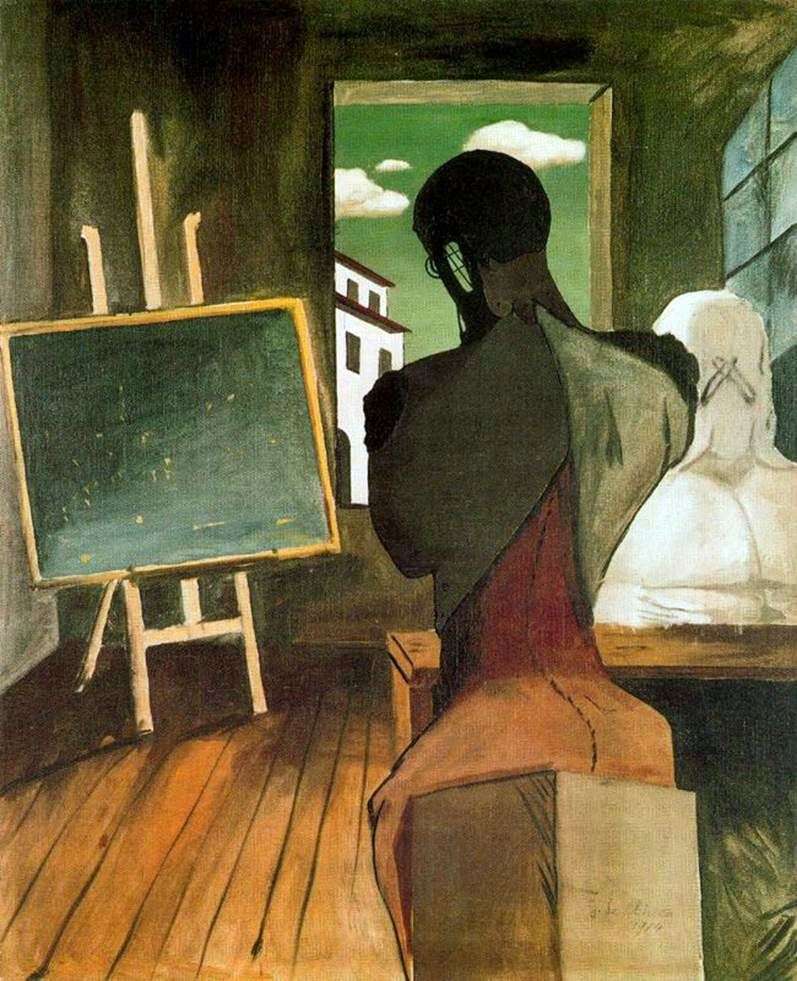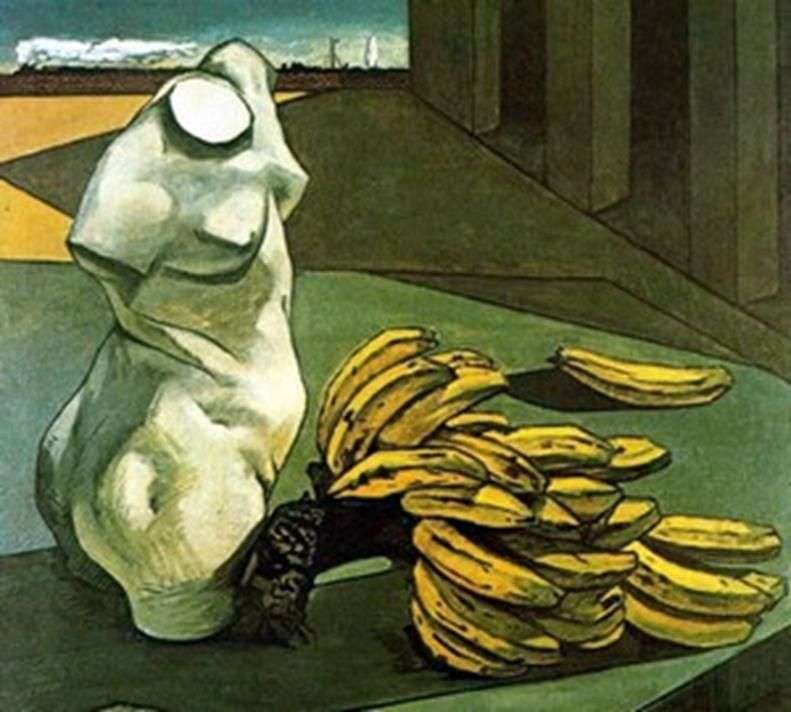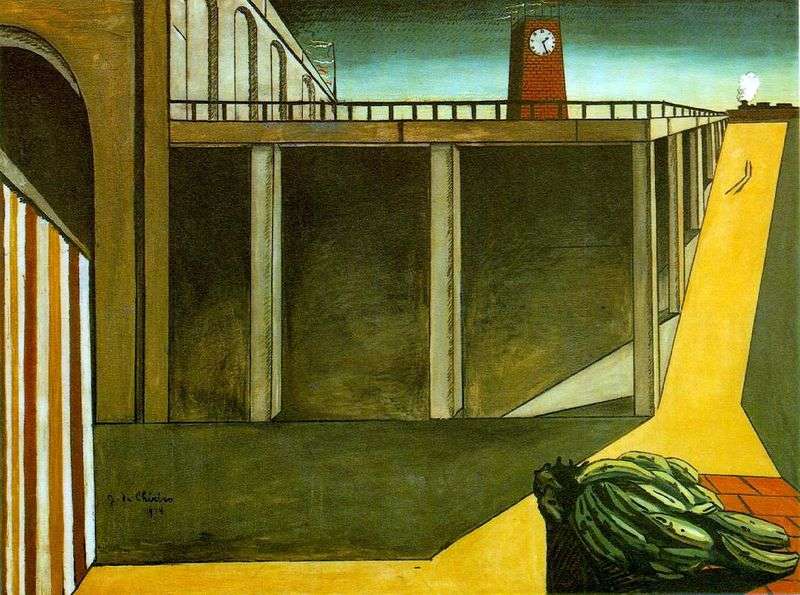“Walk the philosopher” – a novel and unexpected work. De Chirico depicts in perspective a pedestal on which there is a plaster cast of the head of Zeus and two


“Walk the philosopher” – a novel and unexpected work. De Chirico depicts in perspective a pedestal on which there is a plaster cast of the head of Zeus and two

Such works are completely incomprehensible, although de Chirico’s hand is recognized without difficulty; the author’s evidence is evidenced by undoubted indexes in the form of the artist’s favorite images. At

The de Chirico world is motionless, full of emptiness and faceless figures. This is a world of dreams. People are replaced here by vague, diffuse silhouettes. Moreover, somewhere since 1914,

In the works of the early 19th century, de Chirico often has images of bananas. The choice of these images has a sexual background, although it can also be caused

A special reality, consisting of objects of various shapes and textures, producing impressions of a welter against the backdrop of desert landscapes creating a new metaphysical world, vibrating on the

Over time, the gladiatorial cycle undergoes some kind of evolution. There is a transition of the artist to the realistic manner inherent in classical painting. “Gladiators”, created in 1936, have

De Chirico is the poet of the city, but the city is very strange. It is quite obvious that the images of his urban landscapes have some personal significance for

This work arose during the first stay of de Chirico in Paris in the summer of 1911, when, having presented his works at the Autumn Salon and the Salon of